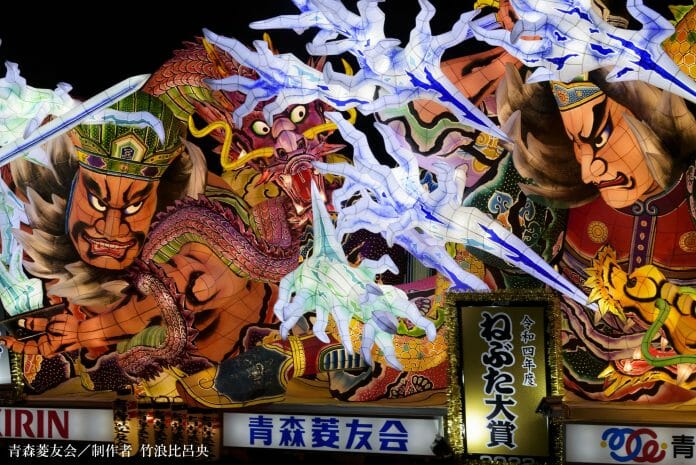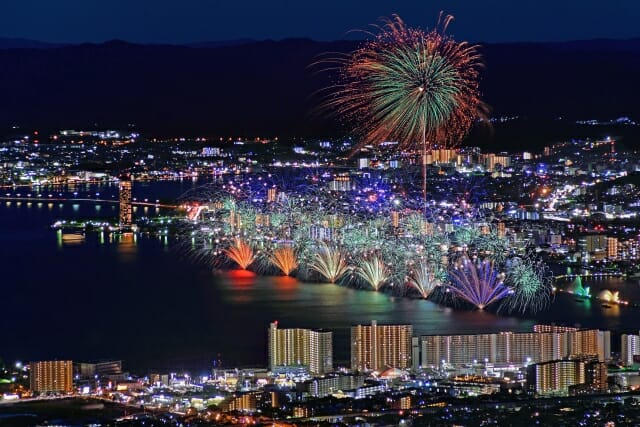“Matsuri”, means festival in Japanese and in 2023, festivals have returned in full swing this summertime. Japan National Tourism Organization Kuala Lumpur Office (JNTO KL) would like to share a selection of interesting matsuri events that have happened this year to inspire your next adventure to Japan. If you’re planning a trip to Japan next summer, remember to put on a yukata to immerse yourselves in these famous summer festivals.
1) Kyoto’s famous Gion Matsuri – throughout July every year
Over in Kyoto, the famous Gion Festival is held every year throughout July, with many events happening over the month with the grandest procession of parade floats on July 17th and 24th. The biggest floats in the 3km-long parade are called “yamaboko” and weigh up to 12 tons! For three days before the processions, Kyoto’s downtown area transforms into festival grounds where you can buy traditional street food like takoyaki and yakitori from stalls in the evenings.
2) Tokyo’s Sumidagawa Fireworks Festival – every fourth Saturday in July annually
A mind-boggling one million people attended this year’s Sumidagawa Fireworks Festival, held in Tokyo. Set against the backdrop of Japan’s tallest structure, the Tokyo Skytree, festival-goers witnessed a spectacular fireworks display held on the fourth Saturday of July every year. The fireworks can be viewed from various parks in Tokyo, especially those in the Asakusa area, but those with tickets to Tokyo Skytree can have front row seats to the show too. It’s highly recommended to book a “yakatabune” or river boat where you can eat, drink, and marvel at the 90-minute-long fireworks show.
3) Kansai Region’s Gozan Okuribi and Lake Biwa Fireworks Festival in August
Meanwhile on the evening of August 16th every year, the traditional event of Gozan Okuribi (Mountain Bonfire) is held. Related to the Obon festivities to send off the spirits of the dead to the spirit world, these bonfires are lit on the five mountains surrounding Kyoto and are shaped as Japanese kanji. The largest bonfire is in the shape of the word 大, which means big, and the largest stroke is 160 meters long. In this area, another massive fireworks festival takes place at Lake Biwa, in Shiga just 10 minutes from Kyoto. The Lake Biwa Great Fireworks Festival attracts 350,000 people every year on August 8th and the reflections of beautiful fireworks over the lake’s surface is a marvel to behold.
4) The Unique Aomori Nebuta Festival in August
In Aomori Prefecture, the Aomori Nebuta Festival takes place over August 2nd to 7th every year. Over six days, millions of spectators gather to watch beautiful lit lanterns mounted on floats on a parade through town, and the lanterns are usually designed based on Japanese or Chinese mythological figures, kabuki actors or even famous TV personalities. This festival is also famous for its brightly dressed festival dancers (haneto) and anyone can join in as long as you are wearing the costume. Aomori is located in the northern region of Japan’s main Honshu Island.
5) The Thrilling Kishiwada Danjiri Matsuri in Osaka in September
If you’re visiting Japan in September, head over to Kishiwada, Osaka to experience the Kishiwada Danjiri Matsuri. “Danjiri” refers to beautiful, elaborately carved wooden floats which are pulled by groups of men in a parade through town. The festival usually takes place in mid-September annually, and it originates from the year 1703. The highlight of Kishiwada Danjiri Matsuri is a fast and furious race unlike any other – the various neighbourhoods of the town create their own danjiri floats, weighing up to 4 tons, and race through the streets of Kishiwada. The spectacle of watching these massive danjiri move and turn corners attracts up to 500,000 visitors annually!
From vibrant fireworks festivals to delicious street food and unique regional traditions, Japan’s summer festivals are an essential part of the experience when traveling to Japan.










